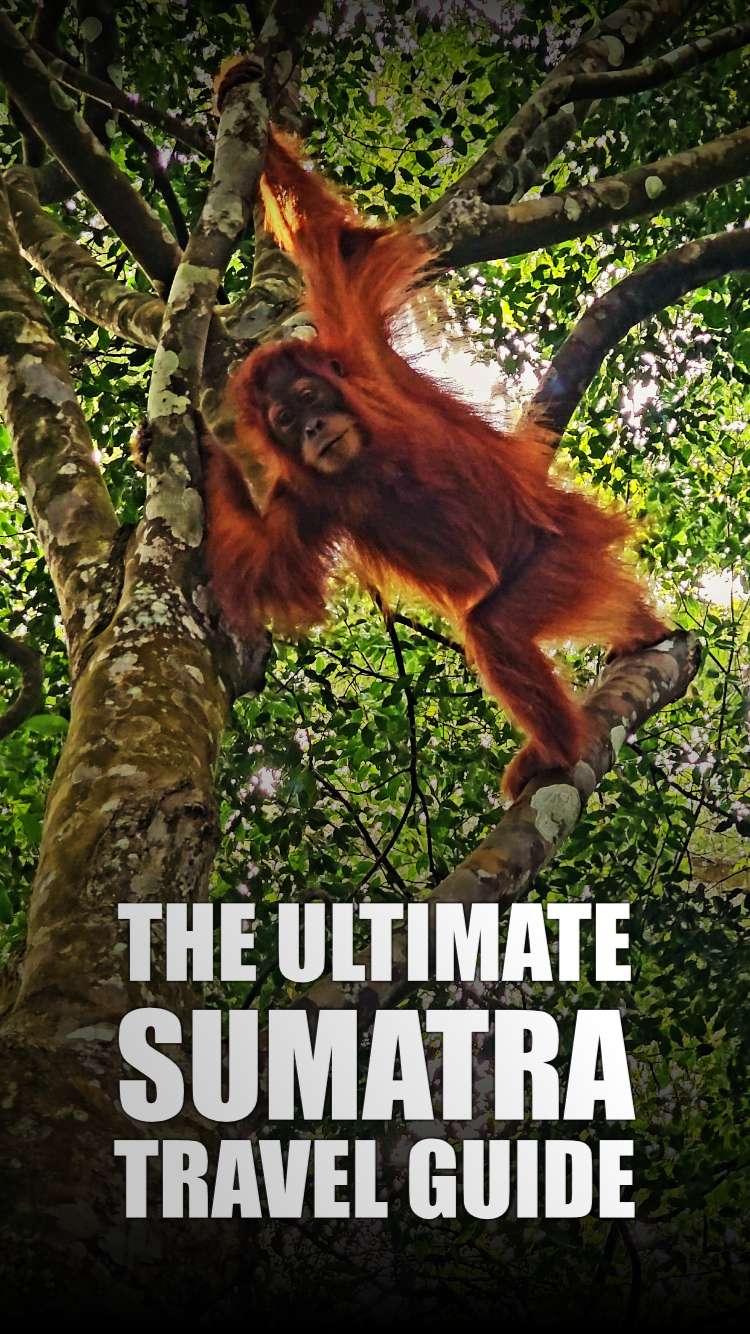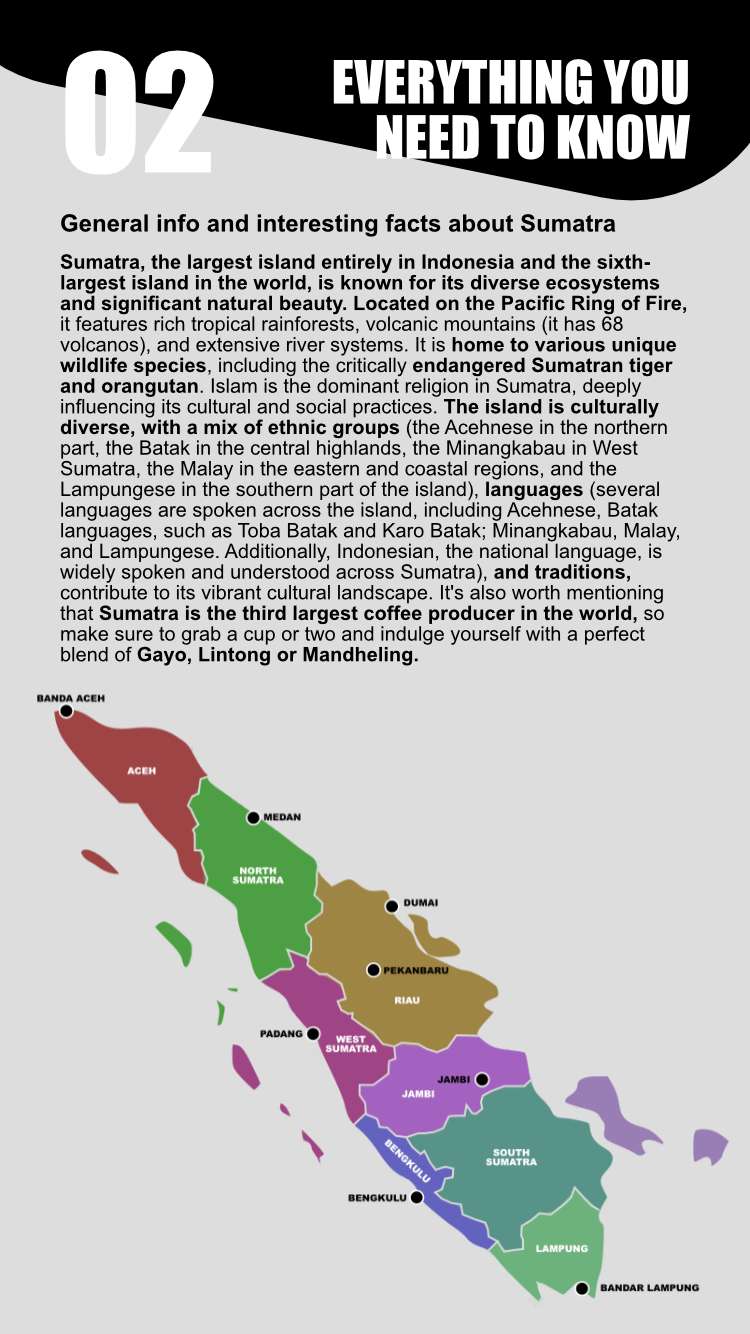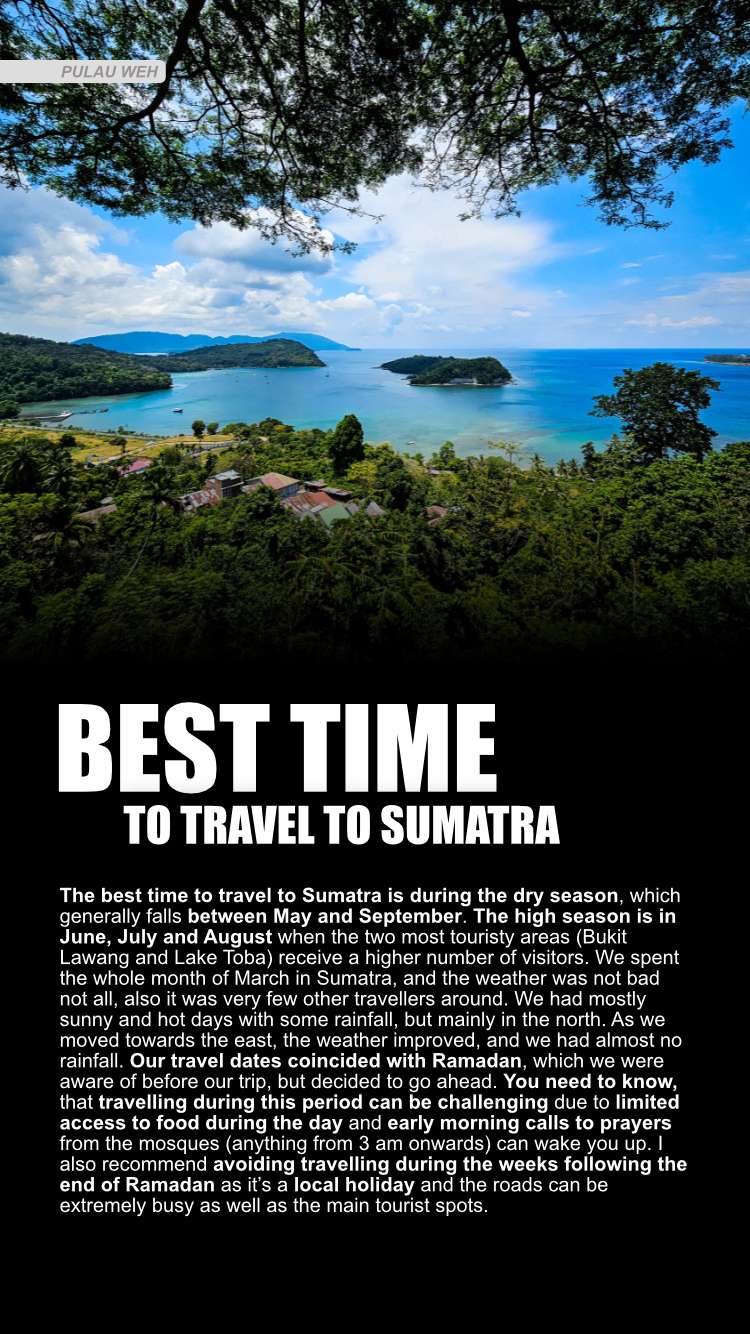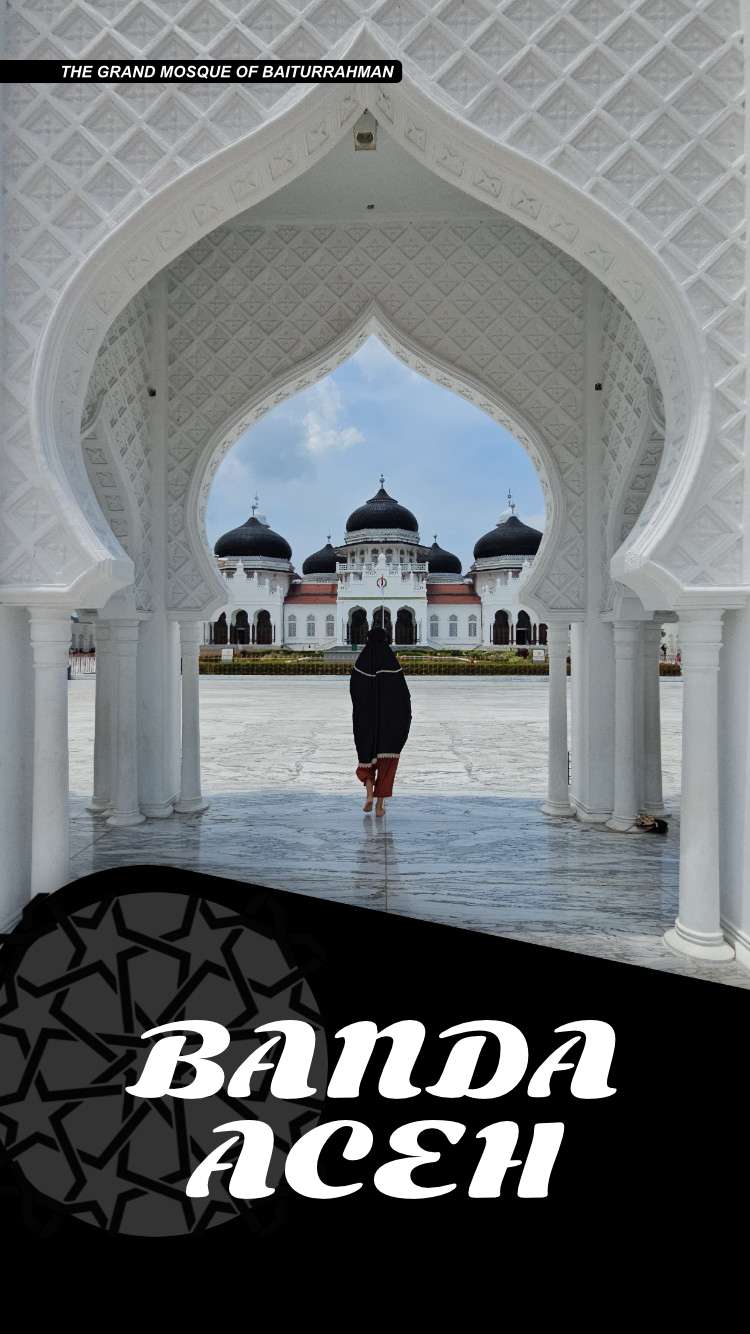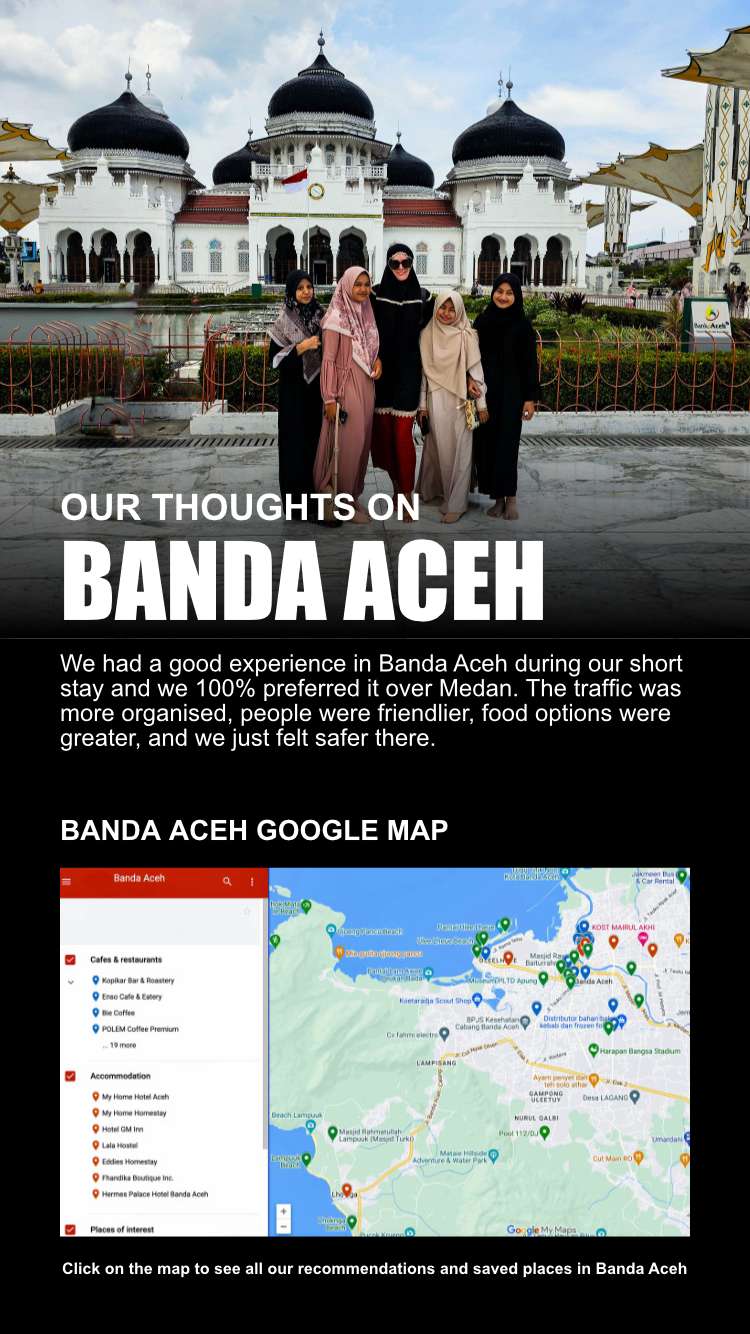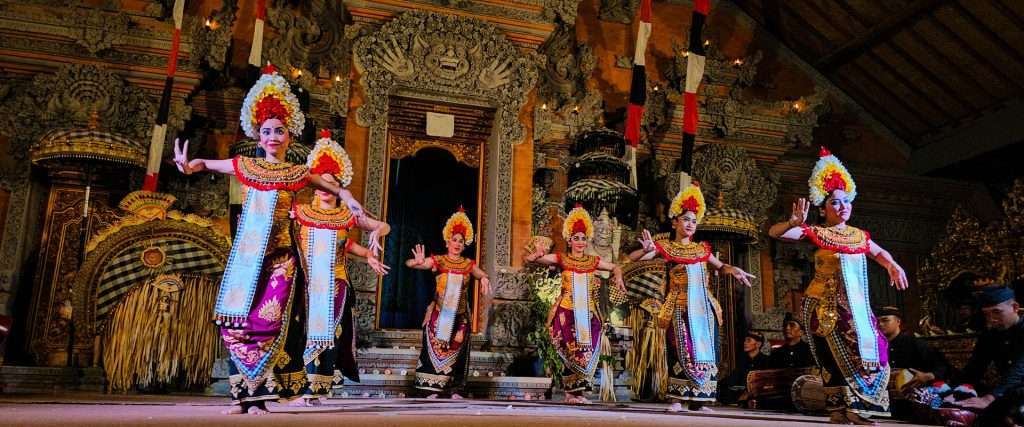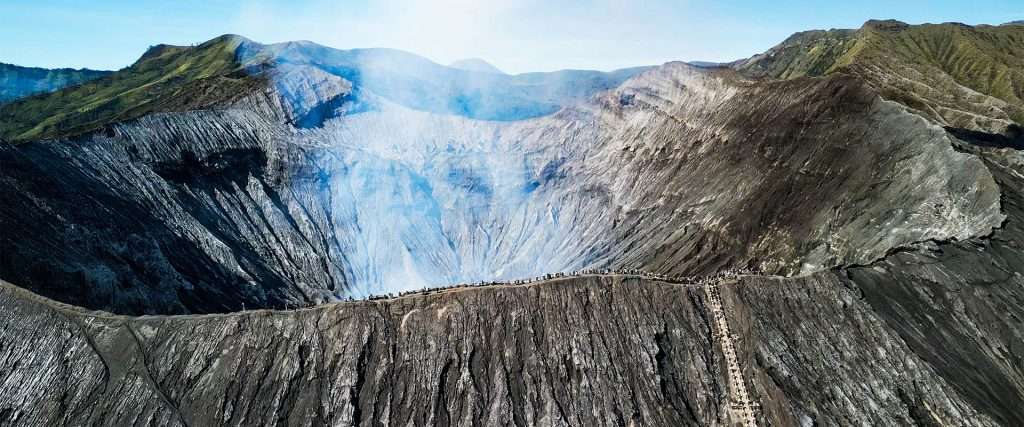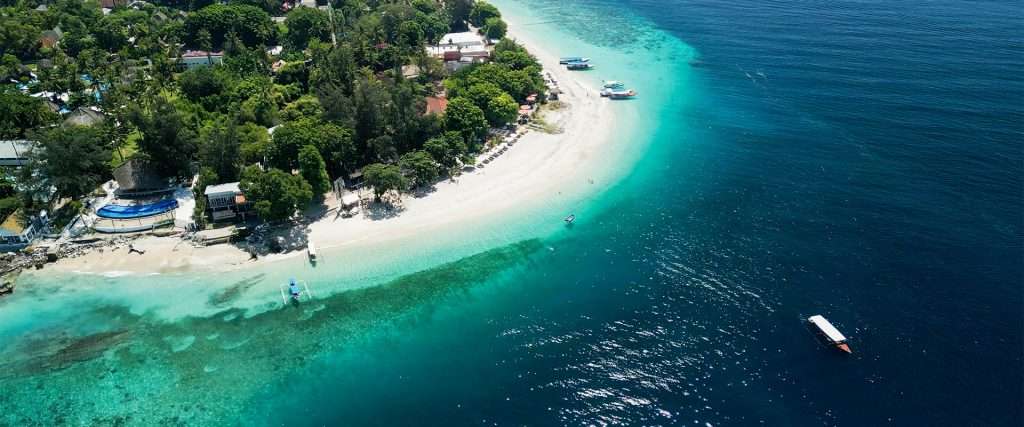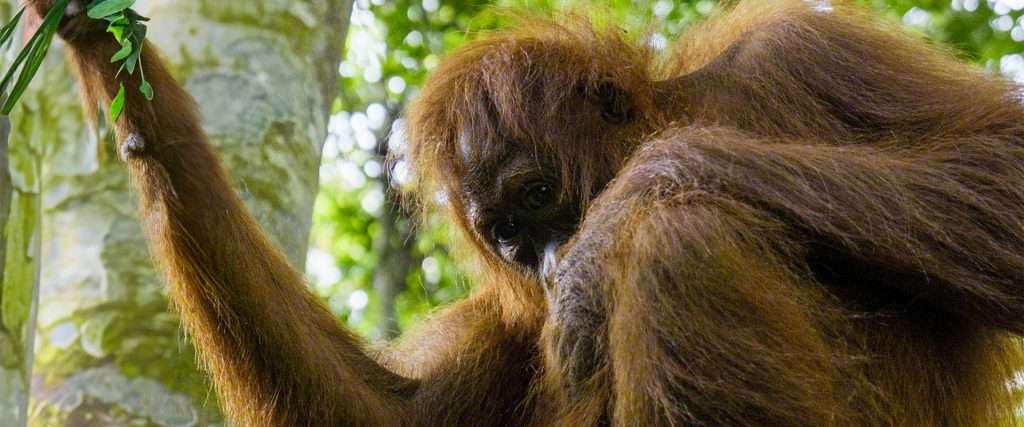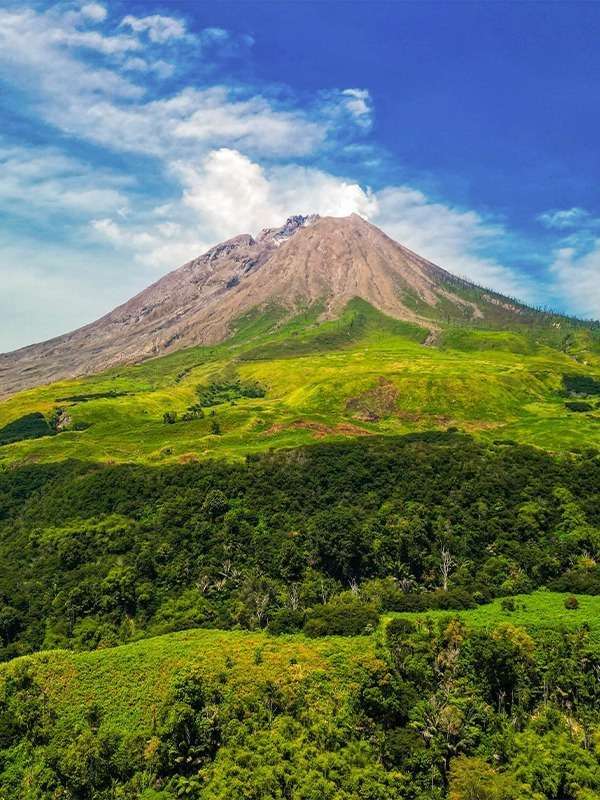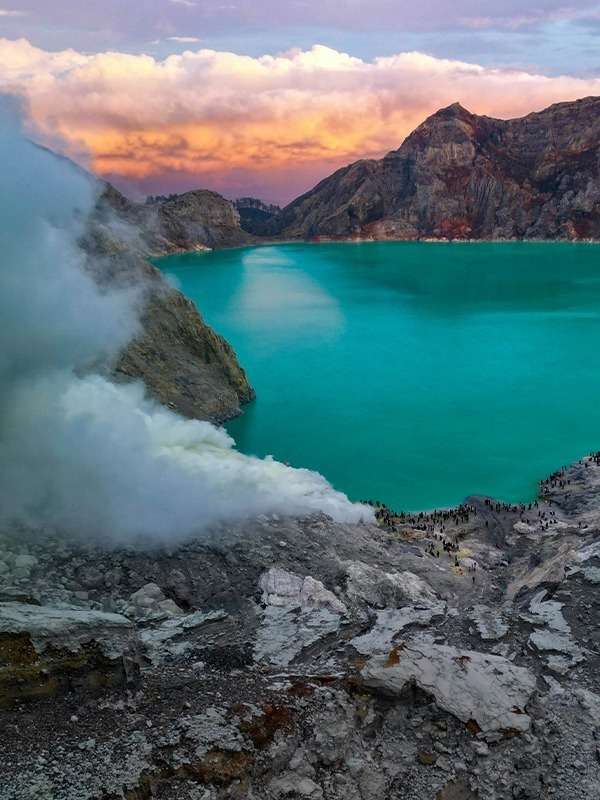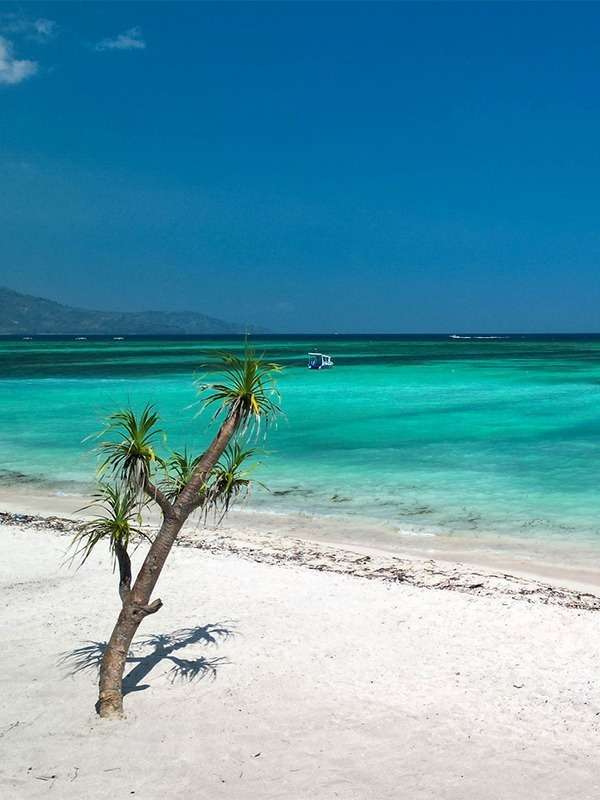Indonesia is an archipelago of over 17,000 islands packed with adventure, breathtaking landscapes, and rich culture. Trek through the lush jungles to spot Sumatran orangutans, hike active volcanoes at sunrise, or unwind on white-sand beaches. This country truly has it all.
This 3-week Indonesia itinerary is a handpicked route based on our three months of exploring, blending must-visit bucket-list destinations with hidden gems. It offers the perfect mix of nature, adventure, culture, and food, with the flexibility to adjust for different travel styles and timeframes, whether you have one, two, or even four weeks.
For extra travel tips and insider advice, check out our Ultimate Indonesia Travel Guide, filled with everything you need to know before and during your trip.
So, are you ready? Let’s dive into this crazy adventure through Sumatra, Java, and Bali!
Your Ultimate 3-Week Indonesia Itinerary
This day-by-day route in our Indonesia travel blog is designed to help you make the most of your trip, covering the highlights of Sumatra, Java, and Bali while balancing adventure, culture, and relaxation. We’ve carefully planned the time spent at each location to maximise your experience and ensure a smooth journey.
To complement this guide, check out our detailed posts on each destination. We dive into the must-see spots, top activities, insider tips, and personal experiences to help you plan with confidence.
Now, let’s break it down and map out your ultimate Indonesian adventure!
Day 1-3: Bukit Lawang, North Sumatra
Start your Indonesia trip with an unforgettable experience in Bukit Lawang, the gateway to Gunung Leuser National Park, a UNESCO World Heritage Site. This eco-tourism gem is one of the best places in the world to see orangutans in the wild. If you love nature, adventure, and wildlife, this is the perfect spot to begin your journey. It’s also the ideal place to wind down and recharge after your long flight. With its remote location, you can fully switch off and just listen to the sounds of nature.
How to Get to Bukit Lawang
Bukit Lawang is about a 4-5 hour drive from Medan’s Kualanamu International Airport. You can pre-arrange a private car for a hassle-free transfer or take a shared minivan for a budget-friendly option. Either way, the scenic ride through palm plantations and rural villages sets the tone for an incredible adventure.

Things to Do in Bukit Lawang
This jungle paradise is packed with adventure and wildlife encounters. Here are the top experiences:
- Orangutan Trekking: Go on a guided trek in Gunung Leuser National Park to see semi-wild and wild orangutans in their natural habitat. Choose from treks lasting anywhere from 3 hours to 5 days, including overnight stays in the jungle. We recommend booking with Sumatra Orangutan Explore, or you can explore other options with local tour operators
- Tubing on the Bohorok River: After a jungle trek, float down the river on a tube. It’s a fun and relaxing way to soak in the rainforest views and potentially spot wildlife along the way
- Bat Cave Exploration: A short hike from town takes you to Bukit Lawang’s Bat Cave, where you can explore eerie rock formations and spot sleeping bats and other species
- Village Stroll: Take a walk along the river, stop for a refreshing drink and a delicious Indonesian meal, and enjoy the relaxing atmosphere. You can also take a dip in the river to cool off from the heat
- Immerse Yourself in Local Culture: Join a village tour to learn more about the region’s rich cultural heritage and support community-based tourism
Where to Stay in Bukit Lawang
Bukit Lawang offers a variety of accommodations, ranging from eco-lodges and budget guesthouses to mid-range hotels, most of which are located along the river or within the village. While amenities are often basic (think fans instead of air conditioning and occasional shared bathrooms), the charm lies in the authentic, nature-centric experience.
For the best balance of price, quality, and sustainability, consider booking with Sumatra Orangutan Explore, Sumatra Ecotravel or Ecolodge Bukit Lawang Cottages. These are highly recommended for their eco-friendly approach and excellent value.
Tip
Bukit Lawang is a great place to slow down and immerse yourself in nature. Spend time by the river, enjoy fresh local food, and experience the warmth of the local community. If you want to fully appreciate the rainforest, we recommend staying at least two nights.
For more trekking tips, must-see spots, and personal experiences, check out our Bukit Lawang Travel Guide!
Day 4-6: Lake Toba, North Sumatra
Next on your Indonesia adventure is Lake Toba, the world’s largest volcanic crater lake, stretching over 100 km long and 30 km wide. At the heart of the lake lies Samosir Island, a peaceful spot filled with culture and stunning views.
Lake Toba is perfect for both relaxing and exploring. Spend your days swimming, kayaking, or simply enjoying the incredible scenery. Samosir Island feels like a hidden gem, with little traffic and a laid-back atmosphere. Make sure to immerse yourself in the rich Batak culture by visiting traditional villages and historic sites.
How to Get to Lake Toba
The easiest and most affordable way to get to Lake Toba from Bukit Lawang is by tourist bus with PT. Happy Track Tour. Tickets cost IDR 270k per person (cash only), and the trip takes around 9 hours with breaks for rest and lunch. The bus will drop you off at Parapat ferry terminal, where you can catch a ferry to Tuk Tuk on Samosir Island.
Alternatively, you can take a private car for a more comfortable journey, but you will need to pay around IDR 1.4 million per car.
From Medan, the journey takes about 5-6 hours by private car or local bus to Parapat, followed by the ferry to Samosir Island.

Things to Do at Lake Toba
Lake Toba offers a mix of nature, adventure, and culture. Here are some of the top things to do:
- Explore Samosir Island: Rent a bike or scooter to explore the island’s scenic villages, terraced hills, and Batak architecture. Don’t miss places like Tuk Tuk, Tomok, and Ambarita
- Swim or Try Water Sports: The calm waters of Lake Toba are perfect for swimming, jet-skiing, kayaking or paddleboarding
- Learn about Batak Culture: Visit traditional Batak houses, museums, historic sites, and ancient tombs to immerse yourself in the region’s rich culture
- Visit Sipira Hill and Bukit Holbung: Enjoy panoramic views of Lake Toba from these scenic viewpoints, which are perfect for hiking and photography
Where to Stay at Lake Toba
You’ll find a variety of accommodations on Samosir Island, especially around Tuk Tuk. Options range from simple guesthouses to mid-range hotels, many offering beautiful lake views and a peaceful atmosphere. While amenities may be basic, staying close to the water and experiencing the local culture makes it worth it.
Tip
Lake Toba is the perfect spot to unwind and recharge. With its calm waters, stunning landscapes, and rich culture, it’s ideal for a relaxing getaway. It’s no surprise that it’s also popular with local tourists. We recommend staying at least two nights to fully appreciate the scenery and explore the local culture. For more tips, must-visit spots, and personal experiences, check out our Lake Toba Travel Guide!
Day 7-9: Yogyakarta, Central Java
It’s time to explore Indonesia’s second-largest island, Java. Your journey begins in Yogyakarta, or Jogja as the locals call it. Located in Central Java, this vibrant city is a blend of culture, history, and nature. As the cultural heart of Java, it’s home to royal heritage, traditional arts, and some of Indonesia’s most iconic landmarks.
Visit the Kraton (Sultan’s Palace), explore the ancient temples of Borobudur and Prambanan, and stroll along the lively Malioboro Street. Yogyakarta is a must-visit for its unforgettable bucket-list experiences, with Borobudur and Prambanan leading the way!
How to Get to Yogyakarta
The easiest way to travel from North Sumatra to Yogyakarta, Central Java, is by taking a direct flight, which takes about 3 to 4 hours. First, you’ll need to take a minivan or private transfer back to Medan, then catch a flight to Yogyakarta with airlines like Lion Air or Super Air Jet. Once you arrive, you can jump straight into the city’s vibrant atmosphere and start exploring.
If you’re travelling from Jakarta, Java, the best way to get to Yogyakarta is by train. Catch one of the ‘fast’ trains from Gambir Station for a 6-hour scenic ride on the Argo Dwipangga Executive Class.
Enjoy spacious seating, beautiful views, and a restaurant coach offering beverages and local dishes, making the trip both comfortable and enjoyable.

Things to Do in Yogyakarta
Yogyakarta is packed with history, culture, and vibrant energy. Here are the must-see experiences during your visit:
- Stroll around the city: Explore the lively streets of Yogyakarta, visit local markets, and soak in the vibrant atmosphere of this bustling city
- Visit the Kraton (Sultan’s Palace): Dive into the royal history of Yogyakarta by touring the Sultan’s Palace, an iconic symbol of the city’s cultural heritage
- Explore Taman Sari Water Castle: Discover this stunning historic site, once the royal bathing complex, and learn about its fascinating history
- Sunrise at Borobudur Temple: Don’t miss this breathtaking sunrise experience at the world’s largest Buddhist temple, Borobudur
- Visit Prambanan Temple: Explore the impressive Prambanan Temple, a must-see Hindu temple complex with beautifully preserved structures
Where to Stay in Yogyakarta
Yogyakarta has a range of accommodation options, from budget guesthouses to luxury hotels, catering to all types of travellers.
- Malioboro: This lively area is perfect for those who want to be close to major attractions and vibrant markets. It’s a great base for exploring the city
- Prawirotaman: Known for its trendy cafés and boutique hotels, this area offers an artsy, unique vibe, ideal for travellers seeking something different
- Sosrowijayan: If you’re on a budget, this area has plenty of affordable guesthouses and hostels where you can meet fellow travellers
Tip
Pre-book your sunrise tour of Borobudur to ensure a spot and enjoy a local guide who can share insights into the temple’s history. Yogyakarta is a perfect place to immerse yourself in Javanese culture, and we recommend spending at least two to three days to fully experience it. For further information on the city, check out 14 Best Things to Do in Yogyakarta, the ultimate guide for exploring this vibrant destination.
Day 10-11: Malang, East Java
Next, head to Malang, a charming city in the highlands of East Java. With its colonial vibe, vibrant street art, and stunning landscapes, Malang offers a perfect mix of culture and nature. From colourful villages to historic landmarks, there’s plenty to explore.
Plus, Malang is the ideal starting point for your 3-day & 2-night East Java adventure, leading you to three incredible bucket-list destinations. Make sure it’s on your itinerary!
How to Get to Malang
To reach Malang, hop on the Malioboro Express train from Tugu Station. The 7-hour scenic journey offers beautiful views of Java’s countryside and is an experience in itself. It’s a great way to travel and enjoy the journey before you reach Malang to explore the city’s many highlights.
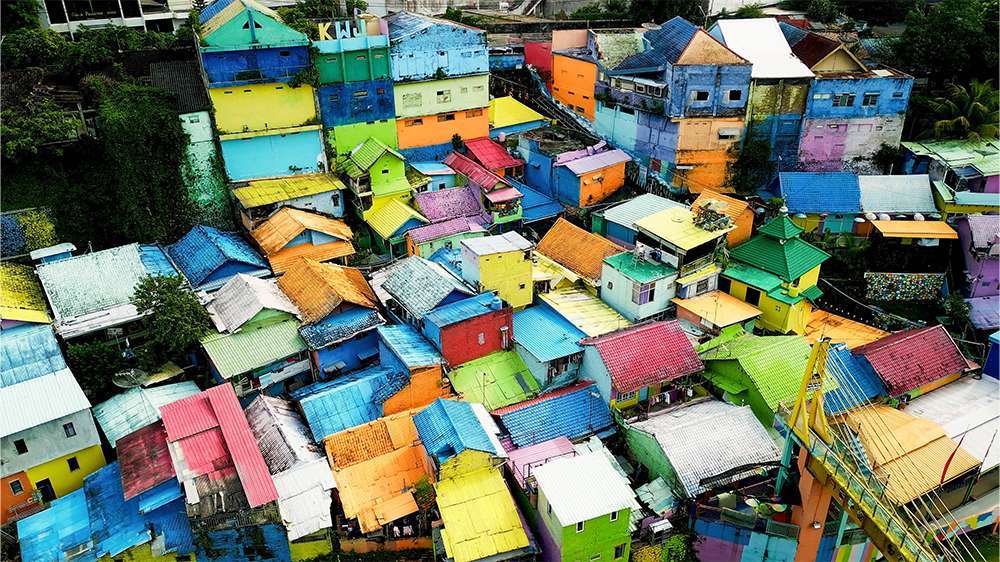
Things to Do in Malang
- Visit Colourful Villages: Explore Jodipan (Rainbow Village) and Kampung Biru (Blue Village), two vibrant spots perfect for photos and an authentic taste of local creativity. Once slums, these neighbourhoods have transformed into artistic landmarks, with stunning murals and brightly painted houses telling a unique story of renewal
- Relax and Enjoy the Atmosphere: Take a break in a cosy café, sip on local coffee, and soak up the city’s laid-back vibe. The impressive colonial architecture and relaxed streets make Malang a great spot to unwind
- Head to the Bukit Kuneer Tea Plantations: A scenic escape with lush green landscapes reminiscent of Malaysia’s Cameron Highlands, perfect for fresh air and breathtaking views
Where to Stay in Malang
You’ll find a variety of places to stay in Malang, from budget guesthouses to comfortable hotels. Staying in the city centre is the best choice, putting you within walking distance of Jodipan, great cafés, and local restaurants.
To fully experience the vibrant city, check out our blog post, 6 Best Things to Do in Malang, packed with insider tips, must-visit spots, and expert recommendations for an unforgettable trip!
Day 12: Tumpak Sewu, East Java
Tumpak Sewu, also known as the “Thousand Waterfalls,” is one of Indonesia’s most breathtaking natural wonders. This 120-meter-tall cascade is a must-visit for nature lovers and adventure seekers. The dramatic curtain of water pouring from the cliffs creates an incredible sight, making it one of the most beautiful waterfalls in East Java (trust us in this!).
How to Get to Tumpak Sewu
We booked a 3-day & 2-night East Java tour that covered Tumpak Sewu, Mount Bromo, and Kawah Ijen, ensuring a smooth and hassle-free journey. If you’re travelling independently, consider staying closer to the waterfall instead of Malang for an early morning start. You can rent a scooter, but a private driver is a more convenient option, especially if you have luggage.
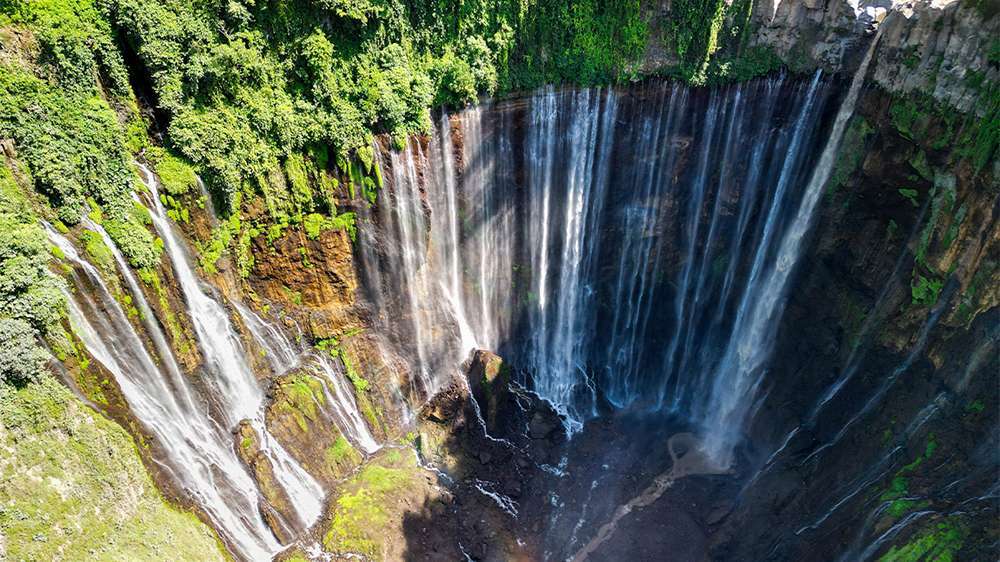
Things to Do at Tumpak Sewu
- Admire the View from above: The main viewpoint offers a jaw-dropping panoramic view of the entire waterfall. It’s the perfect spot for capturing epic photos or even flying your drone!
- Hike Down to the Base: For a closer look, take the steep but rewarding trek down. Be prepared to get wet as you cross streams and navigate slippery paths! It’s 100% worth it!
- Visit Goa Tetes: A smaller but equally stunning waterfall nearby, ideal for a refreshing dip after your hike
After exploring Tumpak Sewu, we hit the road to Cemoro Lawang, the gateway to Mount Bromo, where we spent a (rather short!) night getting ready for our next adventure.
Tip: Wear hiking sandals or waterproof trainers with a good grip and bring a dry bag for your belongings. You’ll definitely get wet, so a raincoat or change of clothes is highly recommended!
Want more details on the tour and the waterfall? Check out our full Tumpak Sewu guide!
Day 13: Mount Bromo, East Java
At 2,329 meters above sea level, Mount Bromo is one of Indonesia’s most iconic volcanoes. But what truly makes it unforgettable is the breathtaking sunrise. Watching the sun rise over the Tengger Caldera, the Sea of Sands, and the glowing crater is a bucket-list experience, a real “pinch me” moment. The dramatic landscapes of this active volcano make it a must-see adventure that you’ll never forget.
How to Get to Mount Bromo
As part of our 3-day tour, we had a private transfer that dropped us in Cemoro Lawang the night before our sunrise adventure. If you’re going independently, you can take a train from Malang to Probolinggo, then a shared minivan to Cemoro Lawang to reach the national park.

Things to Do at Mount Bromo
- Sunrise at King Kong Hill: The panoramic views from King Kong Hill are legendary! Watching the sunrise over Mt Bromo and the surrounding caldera is a moment you’ll never forget. Trust us on this!
- Hike to the Crater: After sunrise, head down to the Sea of Sands and trek up to Bromo’s smoking crater, which feels like walking on another planet! The volcanic landscape is unlike anything else
Tip
Dress Warmly:
The early morning chill at high altitudes can be freezing, even in tropical Indonesia. Bring layers, a hat, and a scarf!
For the Crater Hike:
The path can be dusty, so pack a scarf or mask to protect your face
Charge Your Camera:
The golden light at sunrise is magical, so don’t miss it!
Bring a Drone:
If you’ve got one, bring it along. Bromo offers some of the best aerial shots you’ll ever capture
If you’re looking for further details, check out our full Mount Bromo guide.
Day 14 (AM): Kawah Ijen, East Java
The final leg of your 3-day East Java trip takes you to the stunning Kawah Ijen, where you’ll experience one of the most unique natural phenomena in the world: its famous blue fire. Rising to 2,769 meters, Kawah Ijen’s stunning turquoise crater lake and mesmerising blue flames attract visitors from around the globe. It’s truly a bucket-list destination you cannot miss in East Java!
How to Get to Kawah Ijen
After Mount Bromo, we started our long journey to Banyuwangi, the gateway to Kawah Ijen. If you’re travelling independently, consider adding an extra day for relaxation before your trek. It’ll make the trip much smoother. Upon arriving in Banyuwangi, we had a mandatory health check at a local centre, which included blood pressure checks and a form about any pre-existing conditions. Once we were cleared, we received our “fit to hike” certificates.

Things to Do at Kawah Ijen
The journey to Kawah Ijen begins in the early hours, with a challenging hike to witness the famous blue fire. After reaching the crater, you’ll be rewarded with the rare blue flames, followed by a stunning sunrise over the turquoise lake. The whole experience is unforgettable, and once you’re done, you’ll return to your hotel for a well-deserved breakfast before catching the ferry to Bali.
Tip
Bring a Headlamp:
The early morning trek is challenging and done in complete darkness, so make sure you have a good headlamp to guide your way
Hire a Local Guide:
While you can visit on your own, having a local guide is highly recommended. They’ll keep you safe around the crater and share valuable insights into the sulphur mining operations
Prepare for the Smell:
The sulphur scent in the crater is strong, so be ready for it!
For more tips and a complete guide to Kawah Ijen, check out our detailed post. Also, don’t miss our Ultimate 3-Day East Java Adventure blog post for more tips on how to make the most of this journey!
Day 14 (PM) – Day 17: Ubud, Bali
Welcome to Bali, the Island of Gods! After exploring East Java’s volcanic landscapes, it’s time to cross over to your third and final island. Your journey begins in Ubud, Bali’s cultural heart, a lush paradise of rice terraces, waterfalls, ancient temples, and lively markets. You can dive into adventure, unwind in nature, or embrace the island’s deep-rooted traditions. There’s something for everyone in this vibrant region.
How to Get to Ubud
Your journey from Banyuwangi to Ubud involves a ferry ride to Bali, followed by a drive to Ubud. The ferry from Ketapang (Java) to Gilimanuk (Bali) takes around 45 minutes and runs frequently. Once you arrive in Bali, a private car transfer to Ubud takes about 4-5 hours, depending on traffic. Hiring a private driver is the most comfortable option, but if you prefer to travel independently, you can take a bus from Gilimanuk to Denpasar and then a taxi or ride-share to Ubud.
Tip: Always hire a driver who comes recommended by other travellers or someone you’ve used before to avoid any disappointment. We recommend contacting Wawan at Haz Bali Tour (+62 812 3763 9678 or @hazbalitourandtravel).
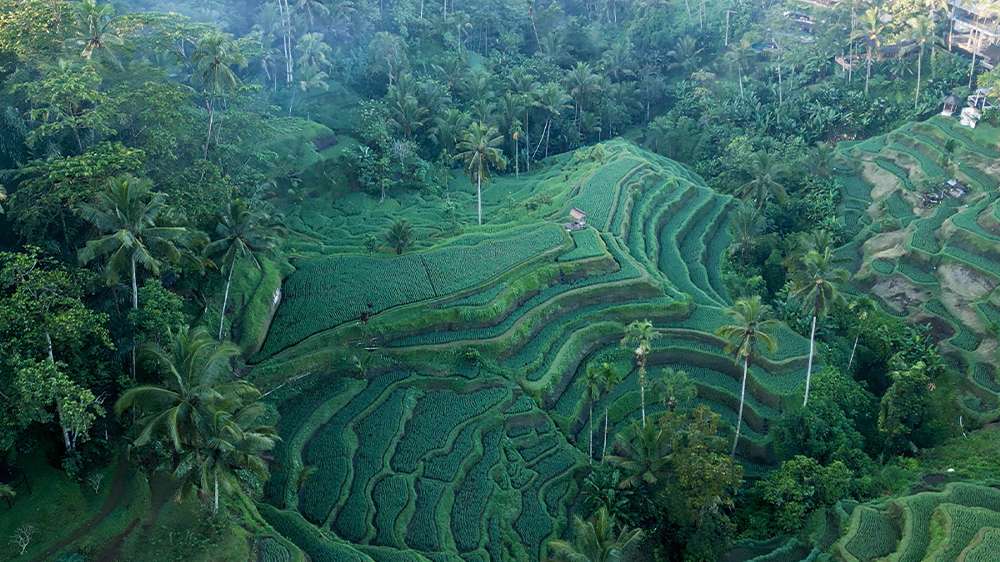
Things to Do in Ubud
Ubud is a spiritual and cultural haven, packed with incredible experiences. Here are some of the
must-visit places:
- Tegallalang Rice Terraces: One of Bali’s most iconic landscapes. Arrive early to enjoy the peaceful scenery before the crowds
- Sacred Monkey Forest Sanctuary: Walk through this lush jungle temple complex, home to playful (and sometimes mischievous) monkeys
- Campuhan Ridge Walk: A beautiful, peaceful nature walk surrounded by rolling green hills. The best time to enjoy it is at sunrise or sunset
- Tirta Empul Temple: Experience a traditional Balinese water purification ceremony at this sacred site
- Kanto Lampo Waterfall: A stunning cascade, perfect for cooling off and taking Instagram-worthy shots
- Sunrise Hike to Mount Batur: If you’re up for an adventure, trek up Bali’s famous volcano to catch a breathtaking sunrise
- Balinese Cooking Class: Learn how to make traditional dishes like nasi goreng and satay from local chefs
- Relaxation & Wellness: Treat yourself to a Balinese massage or a flower bath with jungle views. It’s pure bliss!
Food lovers, take note! Ubud is home to some of Bali’s best cafés and restaurants. Make sure to try nasi campur, fresh smoothie bowls, coffee varieties and organic Balinese dishes at the town’s charming eateries.
Where to Stay in Ubud
Ubud offers a wide range of accommodations, from budget hostels and traditional guesthouses to luxury jungle resorts and private villas. Whether you want a bamboo house in the jungle, a rice field retreat, or a riverside resort, there’s something for every budget and travel style.
Tip
Ubud is pure magic, a place where nature, culture, and spirituality come together beautifully. From ancient temples and rice fields to waterfalls and Bali’s famous wellness scene, there’s so much to experience. If you can only visit one place in Bali, make it Ubud. It’s the perfect base for exploring both the north and south. Stay for at least three days, or longer if you can.
For more insider tips, check out our Ultimate Ubud Guide to discover the best things to do, where to eat, and where to stay.
Day 18-20: Nusa Islands – The Final Leg of Your Trip
After exploring Bali’s vibrant culture and lush landscapes, it’s time to unwind on the breathtaking Nusa Islands. Just off Bali’s coast, these three gems (Nusa Lembongan, Nusa Ceningan, and Nusa Penida) offer the perfect mix of relaxation and adventure. Think crystal-clear waters, white sandy beaches, dramatic cliffs, and incredible marine life.
How to Get to Nusa Lembongan
From Ubud, take a 45-minute drive to Sanur Harbour, where speedboats depart regularly for Nusa Lembongan and Nusa Penida. The boat ride takes around 45 minutes, with multiple operators offering transfers. Tickets can be purchased online or directly at the harbour.
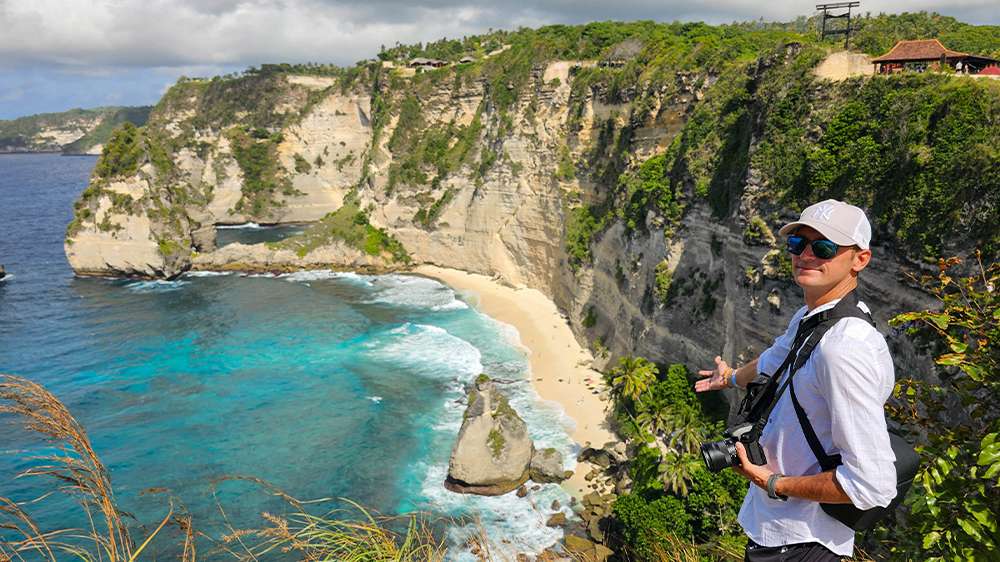
Things to Do on the Nusa Islands
The islands are all about beach vibes, marine adventures, and stunning views. Here’s what you can’t miss:
- Explore Nusa Lembongan & Nusa Ceningan: Rent a scooter and ride around Lembongan, checking out Dream Beach and Devil’s Tears. Then cross to Nusa Ceningan to see the Blue Lagoon
- Snorkelling & Diving: Swim with manta rays (bucket list experience!) and explore vibrant reefs at Manta Point, Crystal Bay, and Gamat Bay
- Surfing & Paddleboarding: Catch waves at Mahana Point or paddle through the Mangrove Forest
- Day Trip to Nusa Penida: Visit Kelingking Beach, Diamond Beach, and Broken Beach, some of the most stunning spots in Indonesia. You can book a tour or rent a scooter to explore independently
Where to Stay on Nusa Lembongan
For the best access to all three Nusa Islands, Nusa Lembongan is the ideal base. It offers beautiful beaches, great restaurants, and easy connections to nearby islands. If you want to fully explore Nusa Penida, consider staying at least two nights.
Tip
If you love pristine beaches, turquoise waters, and incredible marine life, the Nusa Islands are a must-visit! Spend at least three days here to soak in the island vibes. Nusa Lembongan quickly became our favourite, and we highly recommend it as your base.
For more insider tips, check out our detailed guides: Best Things to Do on Nusa Lembongan & Best Things to Do on Nusa Penida
Day 21: Back to Bali
For your final day, return to Bali and unwind in Canggu or another spot near the airport. Enjoy the beach, explore trendy cafes, or squeeze in a last-minute spa treatment before your flight.
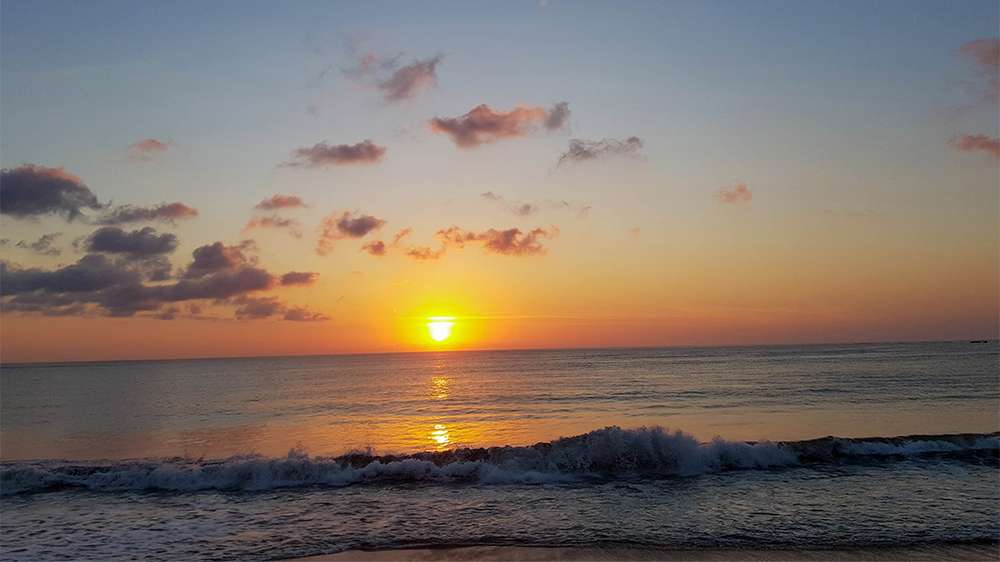
21 Days of Adventure and Exploration
Day 1: Arrive to Medan, North Sumatra and travel to Bukit Lawang
Day 2: Explore the village and visit the Bat Cave
Day 3: Join a day trek to see Sumatran orangutans in the national park
Day 4: Travel to Lake Toba
Day 5: Visit nearby villages and learn about Batak culture
Day 6: Visit Bukit Sibeabea, Bukit Holbung and Efrata Waterfalls
Day 7: Travel back to Medan and fly to Yogyakarta, Java
Day 8: Visit local sights and taste delicious food
Day 9: Join a sunrise tour of Borobudur and Prambanan temples
Day 10: Take the Malioboro express train to Malang
Day 11: Explore Jodipan and the Blue Village
Day 12: Visit Tumpak Sewu Waterfall and travel to Cemoro Lawang
Day 13: Watch the sunrise over Mt Bromo and travel to Banyuwangi
Day 14: Sunrise trek to Ijen Crater and travel to Bali
Day 15: Spend a day relaxing and pampering
Day 16: Visit rice fields, temples and waterfalls nearby
Day 17: Book a day tour to visit either North or South Bali
Day 18: Take a fast boat to Nusa Lembongan and explore
Day 19: Book a diving or snorkelling tour to see manta rays
Day 20: Take a day tour to Nusa Penida and explore the sights
Day 21: Return to Canggu, Bali for your last day
Budget-Friendly Tips for Indonesia
- Accommodation: Stay in guesthouses or homestays for budget-friendly rates and a more local experience
- Food: Dine at local warungs for affordable, authentic meals. Smaller spots often offer delicious home-cooked food
- Transport: Rent a scooter if you’re comfortable, or use e-hailing, shuttles, or a trusted driver for groups. For ferries and speedboats, book through 12go.asia for better rates
- Activities: Many beaches and rice terraces are free or ask for a small donation. Use a scooter to visit attractions and save on costs
- SIM Card: Buy a Telkomsel sim at an official store to avoid extra charges
- Travel Cards: Use cards like Revolut or Monzo to dodge foreign exchange and ATM fees
- Language: Learn a few basic Bahasa phrases. It goes a long way in connecting with locals
- Know Prices: Get familiar with the typical costs for transport, food, and souvenirs to make better negotiations
- For more travel tips, check out our Packing Guide. It’s packed with essential items to help you prepare for the perfect Indonesia adventure!
- Plus, for all the apps we use to book and organise our trip, check out our detailed post of Travel resources
Final Thoughts on Indonesia
This 3-week itinerary takes you through the best of Sumatra, Java, Bali, and the Nusa Islands, with jungles, volcanoes, temples, and beaches. All of these spots are packed into an unforgettable trip. While you could easily spend more time exploring, this route covers our favourite highlights.
If you want to see more, check out our detailed blog posts for insider tips. But no matter where you go, Indonesia will impress you! This itinerary is flexible, so feel free to adjust it to fit your schedule and interests.
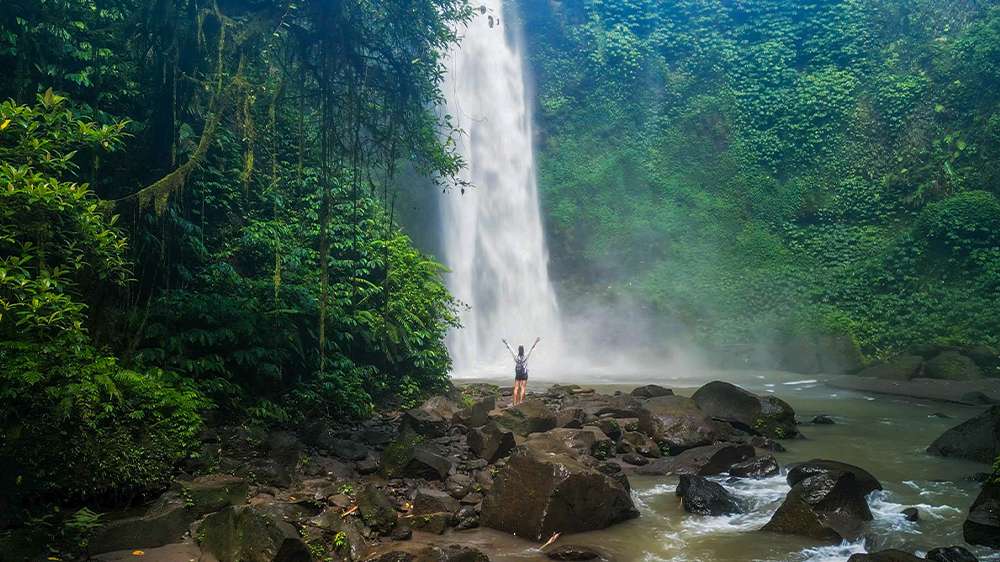
Get Inspired
Indonesia, the world’s largest archipelago, is a land of breathtaking landscapes, rich cultures, and unforgettable adventures. With over 17,000 islands, it offers a diverse array of experiences, from towering volcanoes and lush jungles to pristine beaches and vibrant cities. Among its most captivating destinations are Sumatra, Java, Bali, the Nusa Islands, and the Gili Islands, each offering unique highlights for travellers seeking natural beauty, cultural depth, and adventure.



